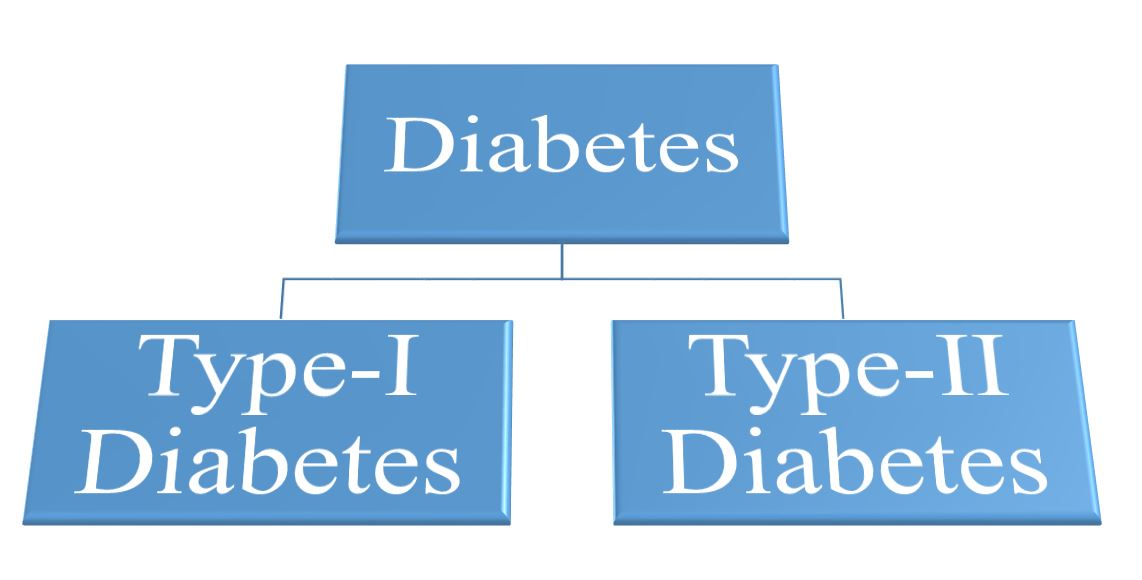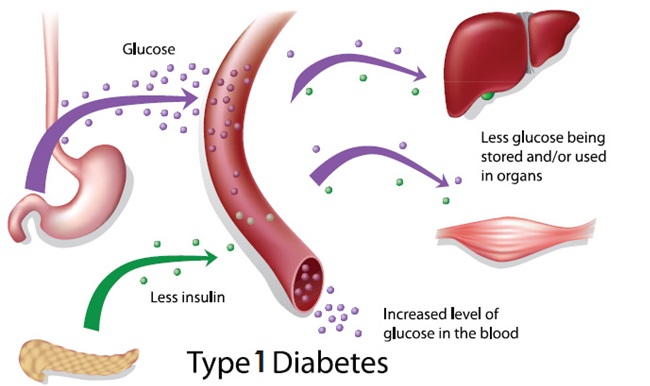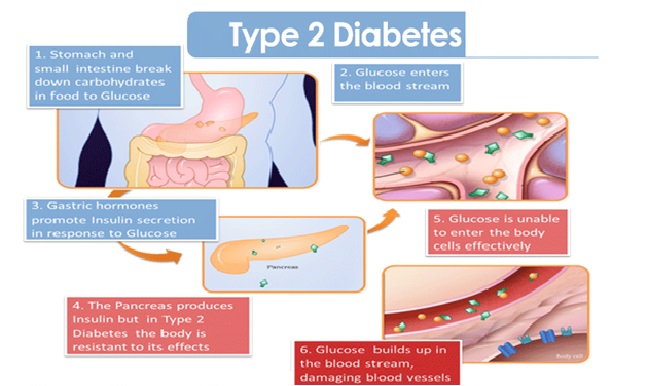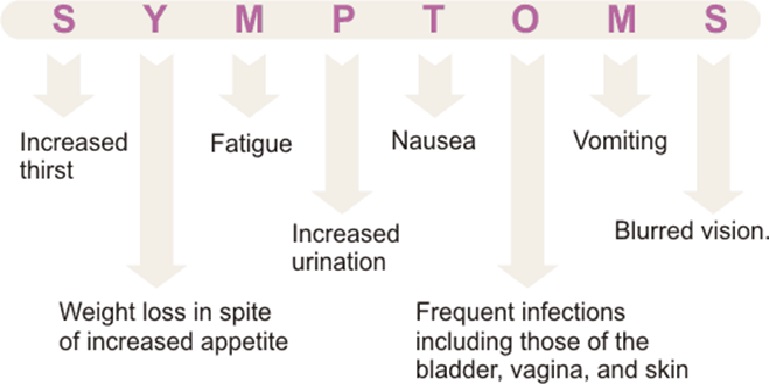How can yoga cure Diabetes? Diabetes can be controlled by practicing various yoga poses, breathing exercises, meditation, good diet and related activities. Yoga for Diabetes can do wonders in reducing your high blood sugar levels.
Research on yoga for diabetes, that looked at the effect of yoga on body composition found that regular yoga can reduce skin thickness while massaging the muscles and reducing body weight. This means that yoga can help lose fat tissue under the skin while maintaining muscle strength and size.
Navigator
Nature of Diabetes Mellitus
Diabetes mellitus is the full name of the disease. It is a lifestyle-related condition due to an imbalance in handling a glucose load and is not a disease. This is a condition in which glucose levels in the blood are much higher than normal and hence this condition is also commonly referred to as sugar disease. The defect in these conditions is that either your pancreas does not produce enough insulin or it produces sufficient insulin but the cells of your body are unable to use the insulin properly.
History of Diabetes
Historically reference to symptoms of diabetes is found in Egyptian papyrus (1500 BC). Ayurveda physicians of 600-400 BC (Charaka and Sushruta) were aware of this disease and named it under the term Prameha and Madhumeha (rain and honey) as they recognized the sweetness of urine. Description of diabetes is seen in Chinese and Greek texts too. Aratus in second century AD named this condition “Diabetes” (siphon) as he perceived it as “melting down of flesh and limbs into urine”.
Prevalence
It is one of the several lifestyle related chronic conditions There are an estimated 100 million diabetics in the world of which around 70 million belong to heavily populated developing countries. In particular, Asian Indians appear to have a higher prevalence (genetic predisposition) of diabetes, than many white European populations. The increasing incidence of diabetes with age may be related to a general decrease in body functions that occur in all cells with aging.
Types of Diabetes
 Type – I and Type – II diabetes are the two types of diabetes mellitus.
Type – I and Type – II diabetes are the two types of diabetes mellitus.
Type-I Diabetes
 Type-I diabetes is when your pancreas produces very little if any, insulin. This type of diabetes is called insulin-dependent diabetes mellitus, which is sometimes abbreviated with the use of the letters IDDM. Since this type occurs most often but not exclusively in youth and young adults, it used to be called juvenile-onset diabetes. People with this type of diabetes must, among other things inject themselves daily with insulin. Without daily injections, they will not survive.
Type-I diabetes is when your pancreas produces very little if any, insulin. This type of diabetes is called insulin-dependent diabetes mellitus, which is sometimes abbreviated with the use of the letters IDDM. Since this type occurs most often but not exclusively in youth and young adults, it used to be called juvenile-onset diabetes. People with this type of diabetes must, among other things inject themselves daily with insulin. Without daily injections, they will not survive.
Type – II diabetes
 Type-II diabetes is when your pancreas produces insulin but it is either not enough for the present needs of your body or the cells of your body are unable to use it properly. This type of diabetes is also called non-insulin dependent diabetes mellitus, which is sometimes abbreviated with the use of the letters NIDDM. It is called ‘non-insulin dependent’ because it can usually be controlled without the use of insulin injections. Until recently, this type was also referred to as maturity-onset diabetes, since it occurs most often in mature adults, 40 years of age and older.
Type-II diabetes is when your pancreas produces insulin but it is either not enough for the present needs of your body or the cells of your body are unable to use it properly. This type of diabetes is also called non-insulin dependent diabetes mellitus, which is sometimes abbreviated with the use of the letters NIDDM. It is called ‘non-insulin dependent’ because it can usually be controlled without the use of insulin injections. Until recently, this type was also referred to as maturity-onset diabetes, since it occurs most often in mature adults, 40 years of age and older.
Cause of diabetes
The precise cause(s) of diabetes is unknown at this time. However, a few factors stand out:
(a) for type II diabetes: heredity, overweight and age.
(b) for type I diabetes: heredity and autoimmunity.
-
Heredity
People who have relatives with diabetes mellitus (DM) are more likely to develop it themselves than those who have no history of diabetes in their family. The reason for this is that hereditary characteristics are passed on from one generation to the next. It is difficult, however, to determine the exact percentage of people with diabetes who also have relatives who are afflicted. The chances of children developing diabetes do increase if they have parents who are afflicted, but there is no certainty that they will. If one parent has type-I diabetes, a child has a 2%-5% chance of developing DM. If a child has Type-I DM, the chances of a brother or a sister developing DM is of the order of 5%-10% (however it may increase to 30% if similar genes are inherited). A person with one parent with type-II diabetes has a 25% chance of developing type-II DM during adulthood: if both parents have diabetes it increases to 50%. If a person has type-II diabetes the chances of a brother or sister developing it is of the order of 20%-40%.
-
Overweight
Approximately 50%-80% of the people with type-II diabetes are overweight at the time of diagnosis. One of the major reasons type-II diabetes develops is overweight. Excess weight may cause what was only a tendency towards diabetes, to develop into active diabetes. The prevention against developing type-II diabetes is maintaining your weight recommended limits.
-
Age
Diabetes occurs mainly in middle and late life. Between birth and 20 years of age, 0.1 to 1% of children have diabetes. Between the age of 41 and 50, 0.5 to 2% of people have diabetes, while the numbers increase to 2 to 10% among people 61 years of age and older.
-
Autoimmunity
In this condition, the body’s immune system (which normally defends the body from disease-causing germs etc.) goes a little haywire and selectively/ mistakenly attacks and destroys some of its own cells, eg., beta cells of the islets of Langerhans in type-I diabetes (associated with the presence of autoantibodies against islet cells in patient’s blood). Certain unclear environmental factors are believed to “trigger” this autoimmune phenomenon is genetically susceptible individuals.
Symptoms of Diabetes
 Complications linked to diabetes
Complications linked to diabetes
Below is a list of possible complications that can be caused by badly controlled diabetes:
- Eye complications – glaucoma, cataracts, diabetic retinopathy, and some others.
- Foot complications – neuropathy, ulcers, and sometimes gangrene which may require that the foot be amputated
- Skin complications – people with diabetes are more susceptible to skin infections and skin disorders
- Heart problems – such as ischemic heart disease, when the blood supply to the heart muscle is diminished
- Hypertension – common in people with diabetes, which can raise the risk of kidney disease, eye problems, heart attack and stroke
- Mental health – uncontrolled diabetes raises the risk of suffering from depression, anxiety and some other mental disorders
- Hearing loss – diabetes patients have a higher risk of developing hearing problems
- Nephropathy – uncontrolled blood pressure can lead to kidney disease
- PAD (peripheral arterial disease) – symptoms may include pain in the leg, tingling and sometimes problems walking properly
- Stroke – if blood pressure, cholesterol levels, and blood glucose levels are not controlled, the risk of stroke increases significantly
- Erectile dysfunction – male impotence.
- Infections – people with badly controlled diabetes are much more susceptible to infections
- Healing of wounds – cuts and lesions take much longer to heal
Yogic management of diabetes mellitus
Diabetes mellitus is to the lack of discipline and training of the mind to be in tune with Vijnanamaya and Anandmaya kosas. One slowly becomes a slave to the lower instincts of the Manomaya kosa. This leads to erratic behaviors such as wrong eating and sleeping habits, wrong company, smoking, alcoholism, consumption of non-vegetarian fatty foods, laziness for physical activity, overindulgence in money-making occupations, and sense pleasures. All these drain out large quantities of energies, with the inconsistent flow of prana which creates an imbalance. Further, this imbalance manifests at the Annamaya kosa as early aging changes characterized by unfolding of the genetic tendency of inability to handle a glucose load, atherosclerosis, obesity, etc. this category of diseases is called “Adhija Vyadhis” (stress born disease). This also disturbs the immune system which forgets its ability to differentiate the self from non-self and starts manufacturing antibodies that coat the beta cells and the insulin molecule to render them inefficient. Yogic practices which are prescribed yoga for diabetes are as follows:
Surya Namaskar
1 to 3 round: Loosening practices:
- Ankle movement (forward & backward)
- Ankle rotation (clockwise & anticlockwise)
- Knee bending & stretching
- Butterfly
- Shoulder rotation (forward & backward)
- Neck movements (up & down and sideways movements)
- Neck rotation
Asanas (postures)
- Vakrasana
- Ardha Matsyendrasana
- Mandukasana part I & II
- Shashankasana
- Ustrasana
- Paschimottanasana
- Tiryak bhujangasa
- Dhanurasana
- Vipareet karni asana
- Uttanpadasana
- Ardhahalasana
- Pawanmuktasana
- Katichakrasana
Pranayama (Breathing practices)
- Bhastrika
- Kapalabhati
- Ujjyayi pranayama
- Anulom vilom
- Bahya pranayama
- Bhramari
- Udgeeth
- Nadi shodhana
- Seetkari Pranayama
- Sheetali pranayama
Shatkarma kriya (Cleansing practices)
- Shankhprakshalana kriya
- Kumjar kriya (vaman dhauti) (vommiting)
- Jal neti
- Sutra neti
Meditation
Yoga nidra
How these yogic tools are beneficial in diabetes mellitus? Note The above-prescribed practices are the general practices yoga for diabetes mellitus. The type and duration of practices differ from individual to individual based on the age and other related health issues of that individual.
Yoga for Diabetes
Yogasanas are the techniques to bring about very deep rest to different parts of the body. In the first step of learning the final position of different posture, it is the surface muscles that are stretched or contracted to achieve the final posture. After getting to the final posture you move on to the second step wherein you relax all the unnecessary contractions. In this phase, when you pass your awareness to all parts of the body and check whether the muscles are all relaxed. This reduces the energy expenditure and helps you to maintain the posture for longer duration without exhaustion. At this stage, your attention has already shifted to the intra-abdominal organs. You may now move on to the third awareness at the point of stretch or pain. You may visualize a feeling of expansion, diffusion and ‘let go’ without changing the final posture. This stretch developed in the body stimulates the organ (pancreas) in fact the whole of the abdomen, thereby bringing it to the equilibrium state. At the same time, awareness is also developed of that particular organ while practicing yogic postures which helps in faster recovery.
Shatkarma kriyas (cleansing practices)
Kriyas cleanse the inner cavities and passages. For example, Neti cleanses the nasal passage, Dhouti the stomach and esophagus, Basti the colon, Shankhaprakshalan the entire gastrointestinal tract etc., Kriyas also strengthen the will power. Further kriyas help in developing voluntary mastery over involuntary reflexes; neti begets mastery over sneezing reflex, dhouti on vomiting reflex, tratakas on blinking & pupillary reflexes etc., In diabetes all these three benefits of kriyas are essential.
Pranayama (breathing practices)
The specific imbalance in pranamaya kosa in diabetes mellitus appears to be a generalized one manifesting as insulin receptor insensitivity at annamaya kosa. This may be considered as excessive prana which is blocked in the nadis that disturbs the function of the vyana component of prana. Also, there may be an excessive flow of prana with blockage of nadis responsible for the normal functioning of samana prana. Pranayama is a technique to remove these imbalances. Nadi shodhan is the best type of practice as seen by a reduction in blood sugar values. This shows that balancing the prana through a basic set of pranayamas is very useful in diabetics. Rapid breathing practices like kapalabhati are useful to bring about the balance quickly. All slow breathing practices are useful in a real yogic sense to slowing down the mind, which in turn reduces stress levels.

